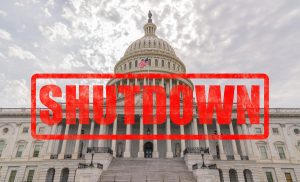A new GASB pronouncement is on the horizon. The Governmental Accounting Standards Board (GASB) issued new GASB Statement No. 101 – Compensated Absences to replace the previous GASB Statement No. 16 – Accounting for Compensated Absences. Under the new statement, the recognition and measurement for compensated absences better addresses new types of leave and unifies the accounting under one conceptual framework. The good news with this standard is that many systems are already in place to implement, and footnote disclosures can now be simplified.
What is this new GASB?
Under the new guidance, compensated absences are now defined as “leave for which employees may receive one or more (a) cash payments when lease is used for time off; (b) other cash payments, such as payment for unused leave upon termination of employment; or (c) noncash settlements, such as conversion to defined benefit postemployment benefits” (GASB Paragraph 3).
Essentially, the leave must accumulate, be related to services rendered and the leave must be more likely than not to be used, paid out or settled through a noncash benefit (GASB Paragraph 9c). The largest difference here compared to the old guidance lies with the estimate of leave being “more likely than not” rather than a “probability.” Under the new guidance, all leave must be considered if it is more likely than not to be used for time off or future retirement.
There are Exceptions
GASB has stated some exceptions and special treatment for certain items under the new guidance. For example, the guidance states that a liability should not be recognized until the leave commences for parental leave, military leave and jury duty leave. Thus, these will not be included in your compensated absences liability calculation (GASB Paragraph 14).
In addition, the guidance specifies that unlimited leave (unlimited PTO) or holiday leave that is not at the discretion of the employees (i.e., National holidays) are not to be recognized as a liability (GASB Paragraph 15a/15b).
How to Calculate
The calculation of the liability will look similar in many ways to that which was established under GASB Statement No. 16. However, there are some key differences, some of which were mentioned above. Generally, the liability should be measured using an employee’s pay rate as of the date of the financial statements (GASB Paragraph 16). If however, the leave is more likely than not to be paid at a different rate, the new rate should be used to calculate the liability (GASB Paragraph 17). This would be attributable to sick time that may be paid out at a lower rate than the employee’s typical rate (i.e., sick time is only paid out at 50%).
Where we see the largest departure is when estimating future leave. The likelihood of payout must be attributed to it being more likely than not (Greater than 50%) rather than assigning a probability of the payout. For example, under the old standard we could estimate there is a 25% probability an employee will stay long enough to vest their full sick leave payout. Under the old standard, to calculate the liability, we would multiply the employee rate by the amount of sick leave outstanding by the probably of vesting (25%). Under GASB Statement No. 101, we need to estimate the more likely than not (Greater than 50%) scenario. In this situation, we determine that it is more likely than not that an employee with use 75% of their sick time or vest into full payment. Consequentially, the new liability will be the employee’s rate multiplied by the amount of sick leave and the amount of sick time expected to be used (75%).
Footnotes
The footnote disclosure portion of this new guidance comes with some relief. Whether you disclose compensated absences separately or part of your long-term liabilities, there is no longer a requirement to disclose additions and deductions to the liability. Instead, the disclosure will show the beginning balance, net change and ending balance of the liability. In conjunction, there is no longer a requirement to disclose which governmental funds are typically used to liquidate the compensated absence liabilities.
When is this new GASB effective?
GASB Statement No. 101 – Compensated Absences is effective for all fiscal years that begin after December 15, 2023. Early implementation is allowed.
Conclusion
While the change in approach can appear confusing at first, it will ultimately allow for a better understanding and valuation of the liabilities on the statements. The next step right now is to use the time you have before implementation to research and prepare. For most, this implementation will not take effect until late 2024 or 2025. This is time to look at how your system tracks different types of leave and how calculations are historically performed at your organization. Now is also a good time to start preparing your historical assumptions for the “more likely than not” and review your own internal policies and procedures. Many firms offer services now to help modernize policies and procedures documents or give guidance services for first year implementation. Many firms also help create statements of procedures (SOPs) that define a process for implementation. These can be helpful for not only implementation, but also documentation and training of new staff members. However you approach, please feel free to reach out with any questions and good luck!




